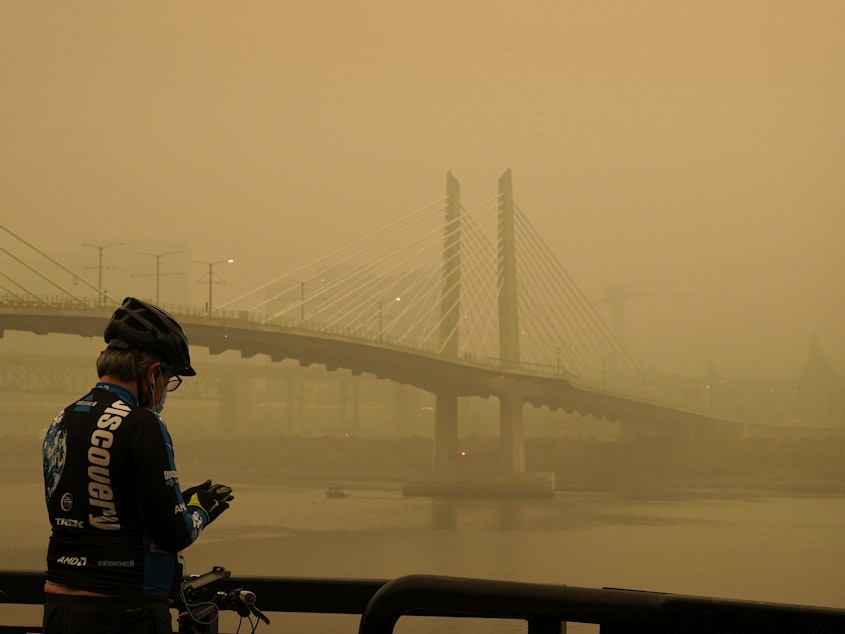'It's A Bit Surreal': Oregon's Air Quality Suffers As Fires Complicate COVID-19 Fight

Wildfires are destroying homes and communities on the West Coast — and they are also creating some of the world's worst air pollution, in a region usually known for its clean living and stunning views. The fires and massive plumes of smoke are also affecting the fight to control COVID-19.
The U.S. Environmental Protection Agency's air quality monitoring website Airnow.gov currently lists Portland's air as "hazardous" Monday, with air quality index readings that have ranged from 350 to more than 515.
"When the forecast is Purple (very unhealthy), everyone needs to cut back on outdoor activities," the EPA site advises. It forecasts "very unhealthy" air quality for Tuesday.
"It's a bit surreal," says Dr. Jennifer Vines, who is the lead health officer for the Portland metro region, "to have these compounding public health public health issues," air quality risks and a pandemic.
Health experts are urging residents to stay indoors to avoid inhaling smoke and ash particles from the unprecedented fires.
Sponsored
The international air quality monitoring website IQAir.com ranks Portland as No. 1 for worst air quality among the world's cities – worse than notoriously polluted spots in countries such as India, China and Israel. Seattle, San Francisco and Los Angeles are also in the top 10, reflecting the wildfires' huge size and broad impact.
Dozens of large blazes have now burned more than 4.6 million acres, according to the National Interagency Fire Center. That includes more than 1.5 million acres in Oregon and Washington, the Northwest Coordination Center says.
Wildfire smoke can be lethal. While it often appears as a large cloud, Vines says the smoke is made up of lots of tiny particles, each much smaller than the diameter of a human hair — and, she adds, "these particles can penetrate deep into the lungs and even cross into the bloodstream."
People who are most in danger are the elderly and those with underlying lung conditions or heart conditions. Children are also at a greater risk, Vines says, "because they breathe higher air volumes relative to the size of their bodies and because their airways are smaller."
The wildfires are also complicating Oregon's COVID-19 strategies.
Sponsored
Before the fires, healthcare professionals were urging people to get outdoors — but now they've reversed that advice. Testing rates for COVID have dropped. And as people get out of harm's way, many of them are also mixing together indoors.
"We're going to be watching COVID testing numbers and hospital capacity really closely in the coming weeks," Vines says. She adds, "But I think right now many of us are just going one day at a time," trying to keep people safe.
What's worse, Vines says, "It's the same people who are at higher risk of complications from wildfire smoke and from COVID. We know many of them in the Portland area are black, indigenous or people of color."
OSHA is urging employers to provide N-95 masks if they are asked to work. If employees have underlying medical conditions, the agency is asking that they are allowed to stay home.
The National Weather Service issued a dense smoke and fog advisory for the northern Oregon coast on Monday, saying visibility would be reduced to as little as 50 feet. [Copyright 2020 NPR]



